After a week of talking to people who really didn’t want to know ALL the details about my latest marathon (you know how it is, once they ask, it’s kind of hard to stop adding things), I decided to take my Blackpool Marathon recap to the interwebs. I closed my running site months ago, but since this was my first destination race, and in England, it also fits in nicely here in my wandering blog. Now, I’d like to warn you that I wrote quite a bit for this recap and most of it is really just interesting to me. You may want to stop a few paragraphs from now, where I summarize my race, or skip ahead to the breakdown of the miles closer to the end.
As I showed in my last post, Blackpool is a town on the north-west side of English coastline, looking out over the Irish Sea. We got to see a lot of this sea while running, which I think was my favorite part of the race. That being said, being on the sea, it was also very windy [stress factor #1] which I didn’t really take seriously enough until it was facing me, or I was facing into it, so to speak.
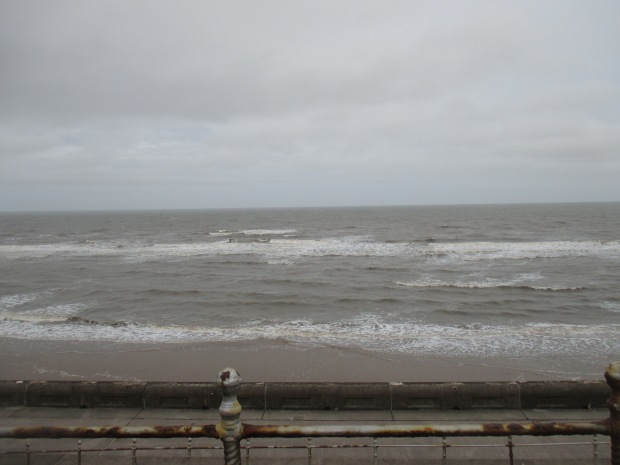
As far as marathons go, this was a slightly-better-than mediocre performance. I went in thinking I had a shot at 3:25 and I came out with 3:35:13, which I guess only looks sad to me because I had such a high goal to begin with. In retrospect, I think I wanted to show the Cambridge University Hounds and Hares that I could run a little closer to their level, impress them in some small way, but realistically, given some over-training symptoms the week before, some Achilles pain, and a bit of stress the week/day before the race, I probably should have aimed for the sub 3:30 and left it at that. Though, I also still think I may have had a chance at 3:25 if I had known the course a little better and started off more moderately.
Anyhoo, race preparation started Friday evening, as I had big travel plans and wasn’t planning on getting into Blackpool until around 9 PM on Saturday. Friday evening, after an important presentation for my PhD [stress factor #2], I packed everything I thought I would need. Thankfully, I have a lot of practice packing from traveling in general, and I’d been collecting all the things I needed for this marathon for about a week in the same drawer: bib belt, gels, socks, sports bra, two options for running tops, two pairs of shorts- one for during and one for post-race, and three 20 pence pieces- since those would be my access to toilets on-course. I’ll explain more about the amenities (or lack thereof) at this race later. The shoes [stress factor #3] were the most difficult part of the packing process as I’d only recently noticed that the shoes that I’d been using throughout the whole training cycle were hurting me- specifically the Achilles. So when packing on Friday, I had both my Dynaflyte-2s and Nimbus-19s, both from the ASICS Gel line, out ready to pack in their shoe bag. I ended up spontaneously going with the Nimbus-19s, which had seemed too rigid in previous runs in them, but had felt the most comfortable in the week leading up to this race.
After a short, but deep rest, I woke up early on the Saturday to get a quick run in. This turned into two quick runs when I realized after getting back to the house that I’d left my key inside. I then sort of half-sprinted over to the Porter’s Lodge to get a replacement, which was a pretty simple affair. I like to think that this last-minute running was part of my preparation for the race, and locking myself out once already a few months ago was preparation for locking myself out this time, as I would not have known what to do so swiftly otherwise. I’m lucky it all went so smoothly, given that at 6:10, when I was standing at the counter waiting for the paperwork for a replacement key to be filed, I had 40 minutes to get home, showered, on the bike and to the train station. I ended up making it to the station with just enough time to grab a coffee, and thus began my journey to Newcastle-upon-Tyne. It was a pretty active day- but a super cool visit, as my post about that shows.
However, despite making it out of Newcastle alright, I was stuck in Preston for too long. It’s sort of ironically funny that after months of living in England and using the public transportation fairly frequently, the day before my marathon is when the (supposedly) notorious transportation quality made an appearance for the worse. This means that traveling to Newcastle, and then traveling to Blackpool wasn’t the most stressful part- it was having a train- and all the trains after that for the evening- fall out on the track from Preston to Blackpool and waiting around a chilly station for 1.5 hours [stress factor #4: even if I wouldn’t feel sick before the run, I was sure I’d contracted a virus that was activated by this cold, and it would start affecting me after the race with my weakened immune system]. And then sitting in the bus for an hour, worried for the first 15 minutes, until I could maneuver it elsewhere, that the heavy backpack on my lap was weakening my legs for the next day [stress factor #5]. And then arriving in the dark in an unknown city in continuing drizzle and cold gusts and having to find the hotel, which is really never any fun, even in the best of situations.
Still, as one fellow traveler mentioned in our conversations (standing around train stations can lead to a lot of sharing), perhaps being put through so much extra stress would make me more tired and then it would easier to fall asleep. I think that was partially true as I can’t really remember much after getting to the hotel.
The next morning, race morning at 6:30am to be precise, I was excited to find a hot water cooker in the room as well as multiple coffee options, including the one I’d brought with me, which was nice, since the breakfast room wouldn’t be open until 8:30. This meant I also had enough time to write in my journal, reflect on my goals for the race, eat a honey waffle and drink my two cups of coffee. I packed my race bag with a bottle of water, some Emergen-C, a change of clothes, watch, MP3 and headphones, my 3 x 20 cents, my 6 gels, and the bib belt. 15 minutes in the breakfast room added a banana and an apple, and I shared the room with a bowl of cocoa puffs and another cup of coffee, and a few people with hangovers, before I had to meander over to the race. I like to think that the stress of travel the night before was worth it for being less than 3/4s of a mile from the race start.
Now, a few details about this race: the Blackpool Marathon was part of the Blackpool Festival of Running that stretched out over the whole weekend, included a 2k, 5k, 10k, half and full marathon, and was hosted by the Flyde Coast Runners (more about the Flyde Coast in the last post). The shorter distances were done on Saturday and the half and full-marathons on the Sunday- which ended up being perfect as the weather was absolutely awful on Saturday and amazing on Sunday- except for the wind, of course. There were 494 people who finished the full and 753 who finished the half marathons, which means there were about 1,247+ people walking around the starting area- and it was surprisingly manageable. I was able to show up at around 9 AM and still pick up my number and shirt without trouble, drop-off (more like toss) my bag in the bag collection area, and even make it to the restroom multiple times. It reminded me why I really like smaller races.

That being said, the only services offered on course were water-bottle aid stations and marshalling by the local police and volunteers. Everything else, including money for the toilets, I needed to provide for myself. Hence the running belt for the gels, which I didn’t actually have a chance to test before the race and while it was supposed to be meant for any gels, including Gus, I ended up losing 1 Gu in the first mile and another at mile 13 [stress factor #6]. I felt like I may need to go to the restroom for the first miles [stress factor #7], but that feeling went away by mile 8- whether starting dehydration or just going away, I don’t know. The good thing is, after realizing I’d lost a gel, I started looking for lost gels, and managed to scrounge three throughout the rest of the race- all taken before mile 22. I don’t know if that was the best judgement… but I decided I’d rather contract some weird disease from the ground than bonk during this race. Logic just doesn’t work during a marathon.

The course itself was great. Here’s an interactive map, for those who are especially curious. If it hadn’t been for the wind, it would have been a nice out-and back course done twice with doable mini-hills and a wonderful view of the coast. The sharp incline shortly before the finish was a bit of a bummer, but even that was easily overcome.
The half-marathoners and full marathoners started off at the same time heading in opposite directions, converging, and then diverging again. The split, however, was stress factor #8, as I forgot to check this the morning of the race and forgot where the split was supposed to occur… meaning I stressed about it for the entire first half of the race. The race website now says it in these words: “Please note: Just before 13 miles, marathon runners split away from half marathon runners. Marathon runners need to keep left to proceed onto the second lap. There are marshals and signs to assist you, but please make yourself aware of the split point before competing to avoid any confusion on the day.” I was so sure, though, that this was different last I checked. When I checked in the week before the race, it was more like: “there will be marshals, but it is the racer’s responsibility to know where to split off.” Though maybe I confused the split point snippet with this one: “YOU MUST ENSURE YOU ARE IN THE CORRECT START LANE – THIS IS YOUR RESPONSIBILITY.” Either way, I was a bit (read: very) nervous that I would get it wrong.
Turns out, I could have just watched the mile-signs (no timers on course) and seen that the marathon signs (in red) were still steadily ticking towards 26 miles like they should. But for an anxious person like me, even the evidence doesn’t really serve to reassure me as much as someone with authority looking at my bib and making sure I was in the correct lane for my race, and telling me that better well get in it if I wanted to continue on the marathon course, gosh-darnnit.
If you got bored a while ago, you may want to restart here. I think I’ve set the scene for the race and all that remains is to quickly recap how the race went:
Mile 1-6 were with the wind, and I ticked down the miles pretty quickly with sub 7:45 mpms. For some reason, because of the wind-turbines being turned in the opposite direction of what I’m used to, I thought that I was running fast into a wind, and therefore wasn’t concerned until we reached the first turn-around and I remembered what running into the wind really feels like. I reached the first 10km at about 47:30, which I knew was too fast, but I was still delusional at that point. I think I took my first gel around mile 6.
Miles 6-13 I stopped being delusional, first with the wind being turned on and then around mile 9 when I started actually feeling tired- which in a 26.2-mile race is never a good point to feel tired [stress factor #8]. Yet the legs still had a good turn-over in them and it helped that around mile 10 we turned back around and had the tail-wind, but it was already a concern. As for turning back with the wind, I kid you not- it was as though someone had turned off the fan on a warm April day in south Florida; the sun, which had made an appearance shortly after 10 AM already, became too warm and the pace suddenly felt much easier. I took another gel at mile 11.5 or so with the next water bottle that crossed my path. I had skipped the first water station, but with the sun, it was starting to feel warm and the first station was the only one I skipped. Indeed, shortly before mile 13 for the half marathoners (but after mile 13 for the marathoners), the divergence point came and with that, back on the main promenade.
Miles 13-17 on the promenade were much less interesting the second time around with less support- a lot of it had been for the half-marathoners who were by now walking back to their homes/cars/hotels. One of these runners offered me his water, and I took the bottle without thinking about whether he was offering a sip or the whole rest of the bottle… The bottle incident at mile 14 or 15 were another sign that things were getting difficult- I’m normally super iffy on germs and who knows what kind of conditions that guy could have… but again, marathon logic. But just because there were no longer people really cheering, there were more than enough people walking along the course, enjoying the promenade and Pleasure Beach. To be honest, it was actually a little more demoralizing than running with no spectators at all would have been (and I’ve done those, too).I did the first half in 1:41:20, which incidentally is also 3rd place overall for women for that segment on Strava, and it’s, of course, a great time for a marathon.
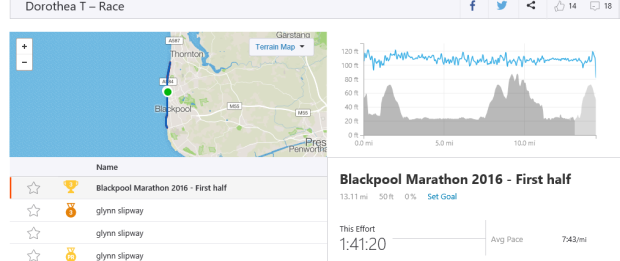
However, not something I could expect to repeat. I sort of managed to keep a steady pace before the turn-around back into the wind, picking up dropped two gels (these made up for the two I’d lost up to that point), taking one of them at mile 14, because I was feeling tired and worried that I would run out of steam, which reflects a bit in the splits during this part; they were pretty varied: 7:45, 7:57, 7:36, 7:57, 8:01. These reflect that I already took my first walking break at mile 15.5, and another one at 16.8, which is even before we turned back into the wind.
Miles 17-23 were tough. We turned back into the wind close to mile 18 and I think I was so demoralized that I just took a walking break to get over the difficult stretch I knew was up ahead. Also, while I definitely had enough gels in my system at this point, I didn’t have enough fluid and this meant I started cramping mile 20 or so, which is the first time I’ve cramped in a longer race. It was mostly the hamstrings- and they weren’t full-on cramps. They would just tighten, force me check my pace a bit, and then release. This wasn’t helped by the fact that the mini rolling hills appeared again. So yeah, fun stuff. Paces: 8:54, 9:08, 9:07, 9:16, 9:23.
Miles 22-26 were redeemed by the fact that we had a bit of a downhill, another flat stretch, and were out of the wind again. Also, it was almost the end. However, I knew that the last water stop was coming up close to mile 24 and had taken the last gel around mile 22… so I was yearning for some water and could easily have drunk the whole 500mL they gave us there. However, the easier conditions meant I could keep myself moving and even avoided walking anymore. The cramps had also subsided and the only thing hindering me were my slowly failing quads. Still, I was faster those last three miles than the three before that: 9:01, 8:47, 8:29.
Last 0.2 miles were me thinking “I’m so over this… just get me to the end.” Even though there was a little hill at mile 26, it was a nice little 8:28mpm pace… I’m also amazed at how much better I looked than I felt the last mile.
As I approached the finish line, I saw that I was at 3:35 something on the clock, so I just made it my mission to keep it under 3:36. That didn’t stop someone from sprinting past me those last meters (seriously?! How?)So, at which point did I give up my 3:25 goal? Probably around mile 9 when I first started feeling tired. A little surer when I walked mile 14. Definitely when I had several 9+mpm after mile 19. I thought mile 19 I may still get sub 3:30, but unlike my last marathon where I had something to fight for the whole race, this time I think I let go of my focus on most of my time goals and it just became a matter of finishing as quickly as possible, regardless of the time. That is, I no longer had a specific time goal to meet, just whatever time I could manage after the cramps, walking breaks and tiredness.
The race in numbers
Date: 28 April 2019, 5 months and 1 week since the last marathon
Cost of race: £35 + travel/hotel money; savings: 60 pence on a toilet on the route
Hours of sleep the night before: 6:06
Temperature at race start/end: 10 degrees Celsius, overcast/12 degrees Celsius, sunny
Gels consumed: 2 Gus and 5 Iso gels
Number of times I wondered if the turn-around should have happened by now: 5
10km: 47:30
Half-marathon time: 1:41:20
30km: 2:26:06 (PR!)
Official chip time: 3:35:13
Placing: 87/494 overall; 6th woman overall; 3rd woman age group 18-30
The experience after the race was really mellow. I thought there was a chance I could have placed in something, so I hung around, used the time to change, refuel with my protein bar, their mini Cadbury chocolate bar, my water, their water, and my banana. I walked a bit too, covering about 2 miles afterwards- anything to keep the legs moving.
Once 14:30 came around and the awards weren’t being done yet, I let go of my glimmer of hope and figured if I won anything, I’d hear about it later. I shuffled up the promenade in the trail of the families of a few marathoners and got a bit of fish n’chips and a coffee at the North Pier. Walked around a bit more, and then headed back to the hotel. I wasn’t quite sure how to get back, but thankfully I recognized things pretty quickly and found the B&B in time for a shower, nap, and then still found some energy to hunt down a beer and a real meal.
More about post-race in my other post, but after a poor night’s sleep and 5 hour journey, I finally made it back to Cambridge, slowly rode up the hill home, and was glad to just lounge about and do home office a few days.
I was so tired this past week- more tired I think than I’ve ever been except after an intense surgical procedure in the fifth grade involving arteries and skin grafts…, yeah. Possibly, this fatigue was the result of having been fatigued before the run and just wiping myself out on that course. It could also have been the combined efforts of travel and racing (I have so much more respect for people who do destination races). It could also have been the combination of PMS and post-marathon recovery, which reminds me that listening to the body as a woman means extra things to listen to. Finally, it could also just have been post-race blues from having not met my expectations for this race. Or maybe it was all four. However, ultimately, it was Marathon #7 and I did it! I’m also feeling much better as of publishing this post and looking forward to getting a bit faster in the shorter distances again.
Sorry about this ultra-long post. Again, I think it’s more for my benefit than any potential reader’s. I can recommend Blackpool as a PR course on a less windy day, and in general, despite so few perks, the Flyde Coast Runners put on a great event- and I love the medal and the shirt! It’s also my first, and maybe only marathon in England, so it will always have a special place in my heart.
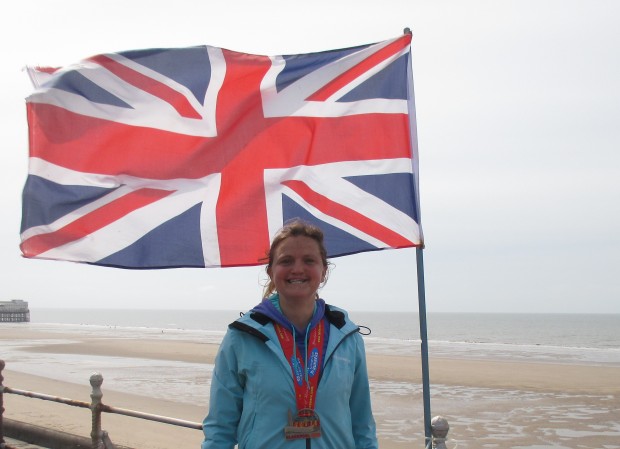
you can see just a bit of the famous North Pier there. Also, quite surprisingly, I got sunburn in my face. That will teach me to put on sunscreen, no matter how overcast it is before a race!
p.s. As of this afternoon, right before this post was scheduled to be published, I received an email saying I was reimbursed for my ticket Newcastle to Blackpool, which means I’m 51 pounds richer and therefore can remember that part of the journey a tad more positively. Thank you Northern!














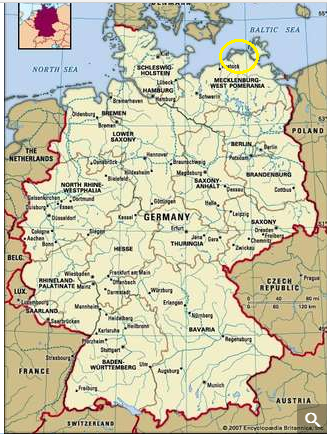
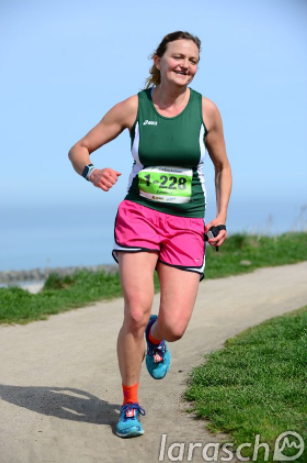









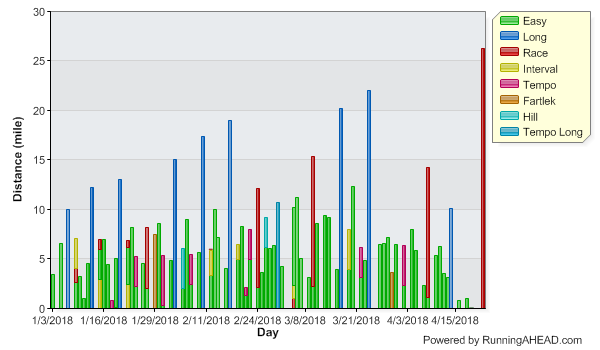






You must be logged in to post a comment.